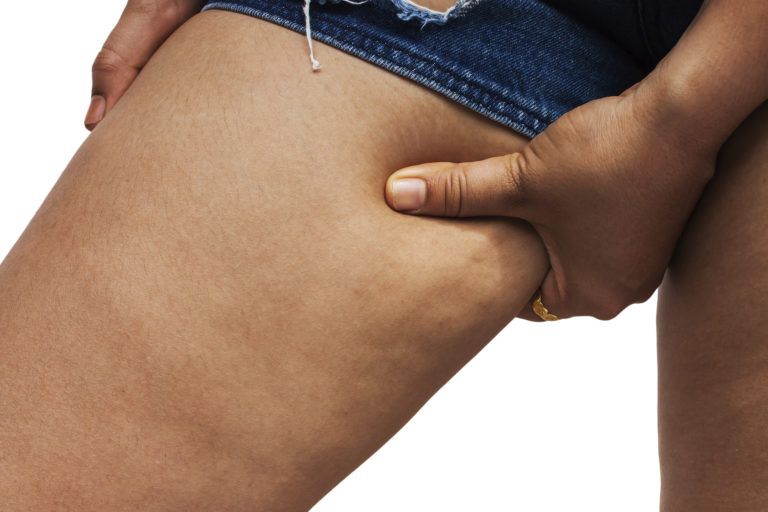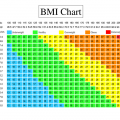In human anatomy, the thigh is the area between the hip (pelvis) and the knee. Anatomically, it is part of the lower limb. The single bone in the thigh is called the femur. The thigh bears much of the load of the body’s weight when a person is upright. It contains many muscles and nerves but only has one bone, the femur, which is the longest and strongest bone in the human body.
The four muscles that make up the quadriceps are the strongest and leanest of all muscles in the body. These muscles at the front of the thigh are the major extensors (help to extend the leg straight) of the knee. They are:
- Vastus lateralis
- Vastus medialis
- Vastus intermedius
- Rectus femoris
These four muscles come together to form a single tendon, which inserts into the patella, or kneecap.
Other muscles of the anterior (front) thigh include the pectineus, sartorius, and theiliopsoas, which is made up of the psoas major and iliacus.
Does Thick Thighs Truly Save Lives
“Thick thighs save lives” is a body-positive slogan made famous by supermodel Ashley Graham. Researchers in China say overweight or obese patients who have a larger thigh circumference also have a lower risk of heart disease. The study, published in Endocrine Connections, examined 9,250 Chinese men and women over the age of 40. Over 5,300 patients were found to be overweight and obese. Researchers say overweight men with thighs measuring over 55 centimeters and women measuring over 54 cm were consistently found to have lower blood pressure.
In another study reported by Harvard Health, Danish scientists evaluated 2,816 men and women ages 35 to 65 who were free of heart disease, stroke, and cancer when they joined the study in the late ’80s. Each participant provided a detailed health history and each underwent comprehensive examinations that included measurements of height, weight, and thigh, hip, and waist circumferences, as well as body fat percentage, which was determined by the highly accurate impedance method.
Researchers tracked the volunteers for an average of 12.5 years. They found that people with big thighs had a lower risk of heart disease and premature death than those with thin thighs. In round numbers, a thigh circumference (measured where the thigh meets the butt) of about 62 cm (about 24.4 inches) was most protective; bigger thighs provided little if any extra benefit, but progressively thinner thighs were linked to progressively higher risks. The predictive value of thigh size held up even after the scientists accounted for other indicators of body composition, including waist circumference, BMI, height, and body fat percentage. And thigh size remained a strong independent predictor even after researchers adjusted for risk factors such as smoking, exercise, alcohol use, systolic blood pressure, cholesterol and triglyceride levels, and (for women) menopause.
It’s only one study, but its results are impressive. Still, because the scientists measured thigh size but not thigh composition, they can’t tell if the apparent protection of big thighs is due to more muscle, more fat, or both.
Muscle matters
It’s tempting to wonder if national personality traits influence the design of scientific studies; for whatever reason, the 2009 Danish study focused on thighs, while a 2007 British study zeroed in on arms. In this case, scientists investigated 4,107 men between the ages of 60 and 79; men who were underweight (BMI below 18.5) were excluded from the study, as were those with heart failure. Researchers evaluated the body composition of each subject by measuring height, weight, waist and hip circumference, mid-arm muscle circumference, and overall fat mass and muscle mass. To evaluate other risk factors, each subject provided a medical history and underwent a physical exam and a fasting blood test.
During an average follow-up period of six years, two factors emerged as the strongest predictors of mortality. Large waist circumference, reflecting abdominal obesity, was linked to a high death rate, but large mid-arm muscle circumferences predicted a reduced death rate. The results held up even after researchers took other risk factors into account.
The British study agrees with other investigations that show the stronger live longer. Part of the reason may be that big, strong muscles reflect regular exercise and an active lifestyle. But muscle itself also contributes to health. Muscle burns calories faster than other tissues. Muscle cells are also more responsive to insulin, lowering blood sugar levels without requiring the high insulin levels that are associated with high cardiovascular risk. Perhaps that’s why a 2010 Japanese study linked small thigh muscles to abnormally stiff arteries in men.
Big thigh muscles might help explain the apparent benefit of large thighs — but extra lower body fat might help, too.






